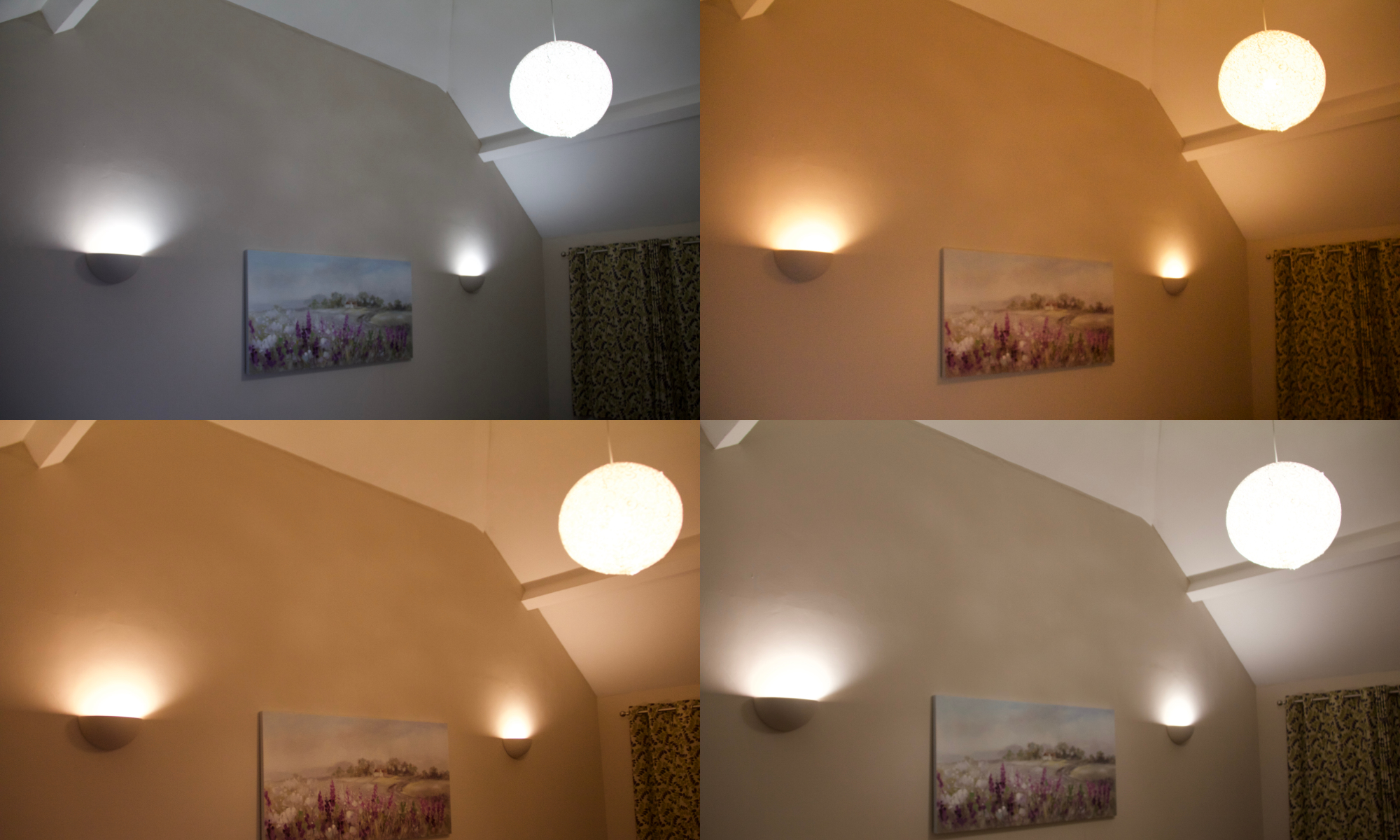I’ve finally succumbed and installed my first Philips Hue smart light bulbs. The timing was right as I’ve just redecorated our family room and the lighting in that room has always been a bit uninspiring.
Choosing which type of Philips Hue bulb?
I’ve always been intrigued by the infinite choice of coloured lighting provided by the original Philips Hue colour light bulbs. I’m not sure, though, I need all those colours but it would certainly be nice to have the choice of bright cool white lights for reading and warm dimmed white lights for relaxing in front of the television. What eventually won me over was the ability to chain the lights together with a single Hue dimmer switch to turn them on and off. Yes, it’s a bit of fun to control your lights via voice through Siri, Google Home or Alexa. However, I still need a single physical switch in the room for all the inhabitants of, and visitors to, our house to use.
I ordered three Hue White Ambiance bulbs, a Hue Bridge and a Hue Dimmer Switch. The bulbs were a single 9.5W B22 Bayonet fitting for the centre light and a pair of 6W candles with E14 screw fittings for the wall up lighters. This seemed a good compromise on cost as the White Ambient bulbs are approximately half the price of the White and Colour variants. For the moment I’m happy with the choice of warm and cool shades of white and the continuous dimming capabilities.
Fitting Philips Hue bulbs
Fitting the Hue light bulbs is dead simple. It’s exactly the same as replacing a conventional bulb. Once in place, turn on the light switch and you get a 100% brightness, cool white light. The full capabilities of the bulbs can only be realised, however, by installing the Hue Bridge and connecting it to your home network.
Connecting the Philips Hue Bridge
The Hue Bridge requires its own power supply and an wired ethernet connection to your broadband router. I connected mine via a powerline adaptor which appears to work just fine. All that remains is to install the Philips Hue app from the app store for your phone/tablet. Through the app you attach all the light bulbs via the Hue Bridge and assign them to rooms. In the Hue app you can then control each individual light for brightness and colour (type of white in my case). You can also control the brightness of all lights in a room as well as create preset scenes.
Philips Hue Dimmer Switch
Setting up the dimmer switch is also straightforward using the Philips Hue app. You simply attach the switch to the room you’ve set up for the light bulbs. You can then use the dimmer switch to turn on and off all the lights in your room. By default the dimmer switch allows you to cycle through the preset light recipes (Relax, Read, Concentrate and Energize) each time you press the on button. You can replace any of the default light recipes with preset scenes (Savanna sunset, Tropical twilight, Arctic aurora or Spring blossom) or assign one of the default scenes (Last on state, Bright, Dimmed or Nightlight). You can also create new scenes from scratch or use a picture as a basis (probably more relevant when you have the white and colour ambiance lights).
Adding Philips Hue to Apple HomeKit
As mentioned above you can attach your Hue lights to Apple HomeKit (Siri voice assistant), Google Home and Amazon Alexa and control your lights using your voice. I have already have some devices managed by HomeKit, via an Apple TV, so I’ve attached my Philips Hue Bridge to that. This enables me to use Siri to switch the lights on/off and dim them using voice commands. Probably more interesting is, if you have iOS 11 installed on an iPad or tvOS11 on an Apple TV, you can now turn your Hue lights on or off depending on your location, the time of day, a sensor value or simply if you are home or not. This becomes really interesting as you can now turn on your Hue lights to welcome you home and off once everyone has left the house.
The possibilities won’t stop there as Philips announced at the end of August 2017 that it will release a software update for the Hue Bridge in October 2017 that will expose any Hue dimmer switch or Hue motion sensor to Apple HomeKit. This will allow these devices to control both Hue lights and non-Philips Hue devices via HomeKit and in turn open up further opportunities for home automation.

